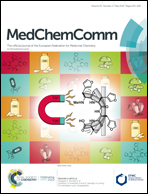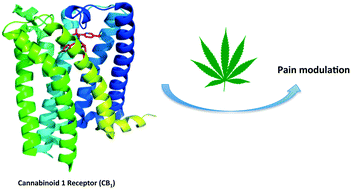 “Much of the opioid epidemic arose from abuse of prescription opioid drugs.
“Much of the opioid epidemic arose from abuse of prescription opioid drugs.
This study sought to determine if the combination of a cannabinoid with an opioid could produce additive or synergistic effects on pain, allowing reduction in the opioid dose needed for maximal analgesia.
CONCLUSIONS AND IMPLICATIONS:
The ability of a cannabinoid to produce an additive or synergistic effect on analgesia when combined with morphine varies with the pain assay and may be mediated by CB1 or CB2 receptors. These results hold the promise of using cannabinoids to reduce the dose of opioids for analgesia in certain pain conditions.”
https://www.ncbi.nlm.nih.gov/pubmed/31218677
https://bpspubs.onlinelibrary.wiley.com/doi/abs/10.1111/bph.14769



 “The endocannabinoid system is an endogenous pathway comprised of the cannabinoid receptors 1 and 2 (CB1 and CB2), their endogenous ligands known as endocannabinoids, and the enzymes responsible for their synthesis and degradation. The endocannabinoidome extends this system to include other receptors such as TRPV1, PPARα, GPR55 and 5-HT1A. An extensive amount of research is now linking the endocannabinoidome to intestinal health through fascinating mechanisms that include endocannabinoid receptor expression in the gut and interplay with the intestinal microbiota. A dysregulated endocannabinoid system may lead to inflammatory bowel disease and colon cancer.”
“The endocannabinoid system is an endogenous pathway comprised of the cannabinoid receptors 1 and 2 (CB1 and CB2), their endogenous ligands known as endocannabinoids, and the enzymes responsible for their synthesis and degradation. The endocannabinoidome extends this system to include other receptors such as TRPV1, PPARα, GPR55 and 5-HT1A. An extensive amount of research is now linking the endocannabinoidome to intestinal health through fascinating mechanisms that include endocannabinoid receptor expression in the gut and interplay with the intestinal microbiota. A dysregulated endocannabinoid system may lead to inflammatory bowel disease and colon cancer.”



 “Currently, the involvement of the endocannabinoid system in cancer development and possible options for a cancer-regressive effect of
“Currently, the involvement of the endocannabinoid system in cancer development and possible options for a cancer-regressive effect of 